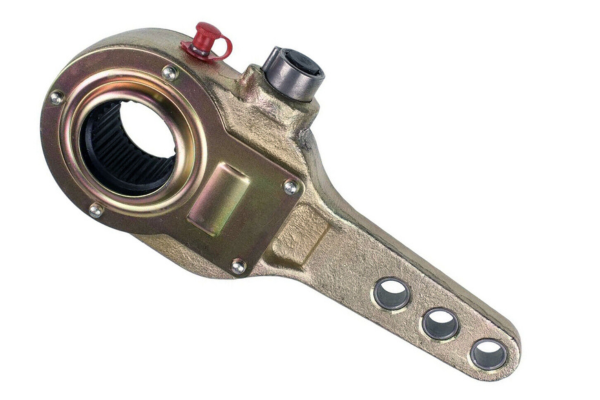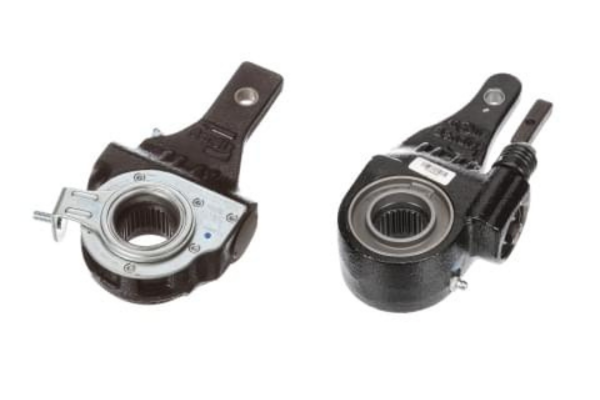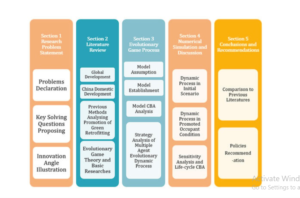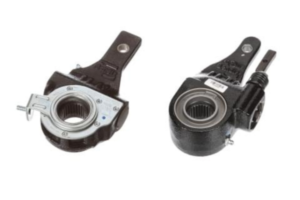Automatic slack adjusters in trucks must comply with specific regulations to ensure vehicle safety. These adjusters maintain the proper tension on brake systems, as mandated by transportation authorities.
Ensuring the safety and reliability of commercial trucks on the road involves stringent regulatory compliance, particularly concerning brake systems. Automatic slack adjusters play a critical role by automatically maintaining the correct distance between the brake drum and lining. Their use is not merely a best practice but a requirement set forth by transportation safety administrations globally.
These devices must meet performance standards to prevent brake failure or malfunctions, which can lead to severe accidents. Fleet operators and maintenance crews must keep abreast of these regulations, as regular inspections and proper adjustments are necessary for continued compliance. By appropriately managing automatic slack adjusters, the trucking industry upholds public safety and reduces the risk of costly liabilities associated with non-compliance.
Federal Motor Carrier Safety Administration (fmcsa) Regulations
The Federal Motor Carrier Safety Administration (FMCSA) sets the bar high for commercial vehicle safety, including those for automatic slack adjusters in trucks. These components are critical for maintaining proper brake function and, hence, road safety. FMCSA regulations stipulate strict standards to ensure every commercial vehicle operates safely.
Minimum Required Performance
Tightened regulations by FMCSA outline the performance standards for automatic slack adjusters. All trucks must meet these to ensure safety:
- Effective braking at all times
- Adjusters must compensate for wear automatically
- No manual readjustment should be necessary
Inspection And Maintenance
Regular inspections prevent brake-related accidents. Here’s what truck operators must do:
- Check slack adjusters periodically for proper function
- Service brakes and replace parts as required by guidelines
- Look for signs of irregular wear and address immediately
Record Keeping
Meticulous records back compliance efforts. According to FMCSA regulations, here’s what needs documenting:
Record Type | Details |
Inspection Dates | Dates when each inspection was completed |
Maintenance Actions | Adjustments, repairs, and parts replaced |
Inspector Information | Name and qualifications of the person performing the inspection |

Commercial Vehicle Safety Alliance (cvsa) Regulations
On the highways, ensuring the safety of commercial vehicles is critical. CVSA regulations play a key role. They set the standards for automatic slack adjusters in trucks. These devices are vital. They maintain proper brake adjustment. Compliance with CVSA regulations helps prevent brake-related accidents.
Inspection And Maintenance Criteria
Regular inspections are essential for safety. The CVSA sets clear guidelines. Mechanics follow these during maintenance checks. Below are the criteria that mechanics must adhere to:
- Brake Performance: Adjusters must meet specific performance requirements.
- Wear and Damage: Components should be free from excessive wear or damage.
- Correct Adjustment: Slack adjusters must be within the correct adjustment range.
Documentation is also important. Repair shops should keep detailed records of inspections.
Out-of-service Criteria
If a truck fails to meet CVSA standards, it faces an out-of-service status. This is serious. Trucks cannot operate until they meet the requirements. Some criteria that may trigger this status are:
Issue | Criteria |
Excessive Pushrod Travel | More travel than allowed by CVSA regulations. |
Missing Components | Any missing parts from the adjuster assembly. |
Non-Functioning Adjuster | Adjuster fails to maintain brake adjustment. |
Immediate action is necessary. Truck operators must repair these issues promptly.
Non-compliance Consequences
Understanding the fallout of disregarding regulations on Automatic Slack Adjusters in trucks is critical. These components ensure proper brake function and safety on the road. Failing to comply with these set standards can lead to serious consequences, impacting not just the vehicle in question, but the entire operation of a trucking business.
Fines And Penalties
Government agencies enforce strict rules and the failure to adhere can result in hefty fines. These monetary penalties vary by jurisdiction, but they all share a common goal: to encourage compliance and promote safety on the roads.
- Costly fines impacting profitability
- Penalties increase with each infraction
Vehicle Out-of-service
Regulatory agencies have the authority to ground vehicles found in violation. A truck sidelined for non-compliance means missed delivery schedules and lost revenue. The direct costs of having a truck out-of-service can be significant.
Consequence | Impact |
Delayed Shipments | Customer dissatisfaction |
Idle Vehicles | Operational inefficiency |
Business Reputation Damage
Reputation takes years to build but can quickly erode with non-compliance issues. Trucks sidelined for non-compliance signal a lack of commitment to safety, potentially leading to lost business and a tarnished brand image.
- Lowered customer trust
- Reduced potential for new business
- Negative media coverage
Tools For Meeting Compliance Requirements
Ensuring trucks remain safe on roads hinges on proper maintenance. Key components like Automatic Slack Adjusters (ASAs) require strict adherence to regulatory compliance. Fleet owners and operators must use precise tools to meet these standards. Let’s explore the tools that streamline the compliance process.
Asa Component Performance Standards
Adhering to ASA performance standards is critical for truck safety. These standards specify the requirements for manufacturing and maintaining ASAs. Owners must ensure that all ASAs in their fleet comply with:
- Durable materials that withstand harsh conditions
- Reliable performance under varied loads and speeds
- Consistent operation throughout their life span
Using approved testing equipment helps conduct regular checks. This confirms ASAs function within set parameters.
Automated Asa Inspection Systems
Fleets can leverage automated inspection systems to ensure ASAs are within compliance. These systems offer:
- Accuracy and efficiency in measuring ASA conditions
- Real-time data that helps in proactive maintenance
- Reports that assist in compliance documentation
Modern systems can detect out-of-spec components, signaling the need for maintenance or replacement before a compliance issue arises.
Training And Education Programs
For personnel to competently use tools and adhere to standards, thorough training is paramount. Standard programs cover:
- Understanding ASA functionality and importance
- Proper inspection techniques
- Guidance on compliance regulations
Well-informed teams bolster compliance through vigilant inspections and maintenance. This dedication to training translates into safer roads for everyone.
Benefits Of Meeting Compliance Requirements
Keeping automatic slack adjusters in trucks compliant with regulations is not just a legal must-do. It brings a basket of perks. Trucks work better, risks dip, and costs can shrink. Understanding these benefits shows just how vital compliance is.
Improved Safety
Trucks become safer with proper slack adjustment. This cuts down on brake issues. Smooth, reliable stops mean less on-road trouble. Safe trucks are a priority for all. With each part playing its role correctly, trucks are least likely to cause accidents.
Reduced Liability Risk
Meeting compliance is a solid shield against legal woes. Trucks checked and fixed regularly rarely cause legal headaches. Owners rest easy knowing they have ticked all legal boxes. No surprise inspections or fines to worry about when rules are followed.
Lower Operating Costs
Keeping adjusters in check means fewer repairs down the road. It’s a clear save on maintenance bills. Well-maintained parts equal longer lifespans and smoother operations. A well-tuned truck drinks up less fuel, chipping away at daily costs.
Increased Efficiency
A truck that meets compliance is a well-oiled machine. Jobs get done faster and more smoothly. Time spent fixing preventable breakdowns drops. This boosts the bottom line. Keeping trucks running without a hitch keeps business moving forward.

Challenges To Meeting Compliance Requirements
Ensuring trucks operate safely is a top priority. One critical aspect of this is the automatic slack adjusters in braking systems. Compliance with regulatory standards for these components is not just important—it’s mandatory. Yet, achieving adherence can be a complex endeavor for truck operators and fleet managers. Let’s explore the specific challenges that they face to meet these intricate requirements.
Understanding Complex Regulations
Grasping the intricacies of slack adjuster norms is tough. Regulations often include technical language that may be difficult to interpret. Without clarity, compliance is a daunting task. These rules cover everything from installation to maintenance and operation standards.
- Key performance parameters
- Mandatory safety checks
- Record-keeping guidelines
Keeping Up With Changes To Regulations
Regulatory bodies frequently update standards to improve safety. Staying informed of these changes is vital. This requires constant vigilance and an agile approach to operational practices.
- Monitor industry updates
- Adjust business operations
- Prevent compliance gaps
Investing In Compliance Tools And Resources
Fulfilling compliance demands investment. Quality tools and resources are necessary for regular inspections and maintenance. These investments ensure that automatic slack adjusters function properly and meet the latest standards.
Compliance Area | Resource |
Diagnostic Tools | Software, measurement devices |
Employee Training | Manuals, workshops, seminars |
Training Employees
Competent employees are the backbone of compliance. Regular training ensures that staff understand and can apply regulations effectively. This involves a structured training program, practical sessions and periodic refreshers.
- Hands-on adjustment training
- Safety protocol workshops
- Compliance refreshers
Best Practices For Asa Regulatory Compliance
Best Practices for ASA Regulatory Compliance ensure that trucks operate safely and efficiently on the roads. Automatic Slack Adjusters (ASAs) are critical for maintaining proper brake function. Trucking companies must adhere to regulations to avoid penalties and ensure safety. The following practices are essential:
Stay Up-to-date On Regulations
Transportation laws change. Staying informed is key. Regularly check for updates from transportation authorities to ensure compliance.
Invest In Compliant Technologies
Choose ASAs meeting regulatory standards. Upgrade outdated equipment to avoid non-compliance fees.
Train Employees On Compliance
Provide comprehensive training for drivers and maintenance staff. Understanding regulations prevents violations.
Establish A Maintenance And Inspection Schedule
Regular checks ensure ASAs function correctly. Create a routine schedule for maintenance and document it meticulously.
Maintain Accurate Records
- Document maintenance work performed on ASAs.
- Keep detailed records of parts replaced or adjusted.
- Record dates, times, and personnel involved in maintenance.
Collaborate With Regulatory Agencies
Work with authorities to stay ahead of potential issues. Solicit feedback to enhance compliance efforts.
Conclusions
Ensuring trucks meet regulatory compliance with automatic slack adjusters is critical. Regular checks safeguard against violations and potential accidents. It’s not just about adherence; it’s about safety. As technology evolves, maintaining compliance remains a top priority for all trucking operations.
Stay informed, stay compliant, and keep our roads safe.
Related Article
Read Now
How Much Free Play Should You Expect in a Slack Adjuster? Maximize Performance!
The ideal amount of free play in a slack adjuster...
Read MoreRevolutionary Evolution: Historical Development of the Automatic Slack Adjuster
The automatic slack adjuster (ASA) has developed over time to...
Read MoreCustom Solutions for Automatic Slack Adjuster Systems: Boost Safety & Efficiency
Custom Solutions for Automatic Slack Adjuster Systems enhance braking consistency...
Read MoreAutomatic Slack Adjuster Warranty And Repair Information: Quick Guide
Automatic Slack Adjusters come with various warranty conditions, which typically...
Read More



